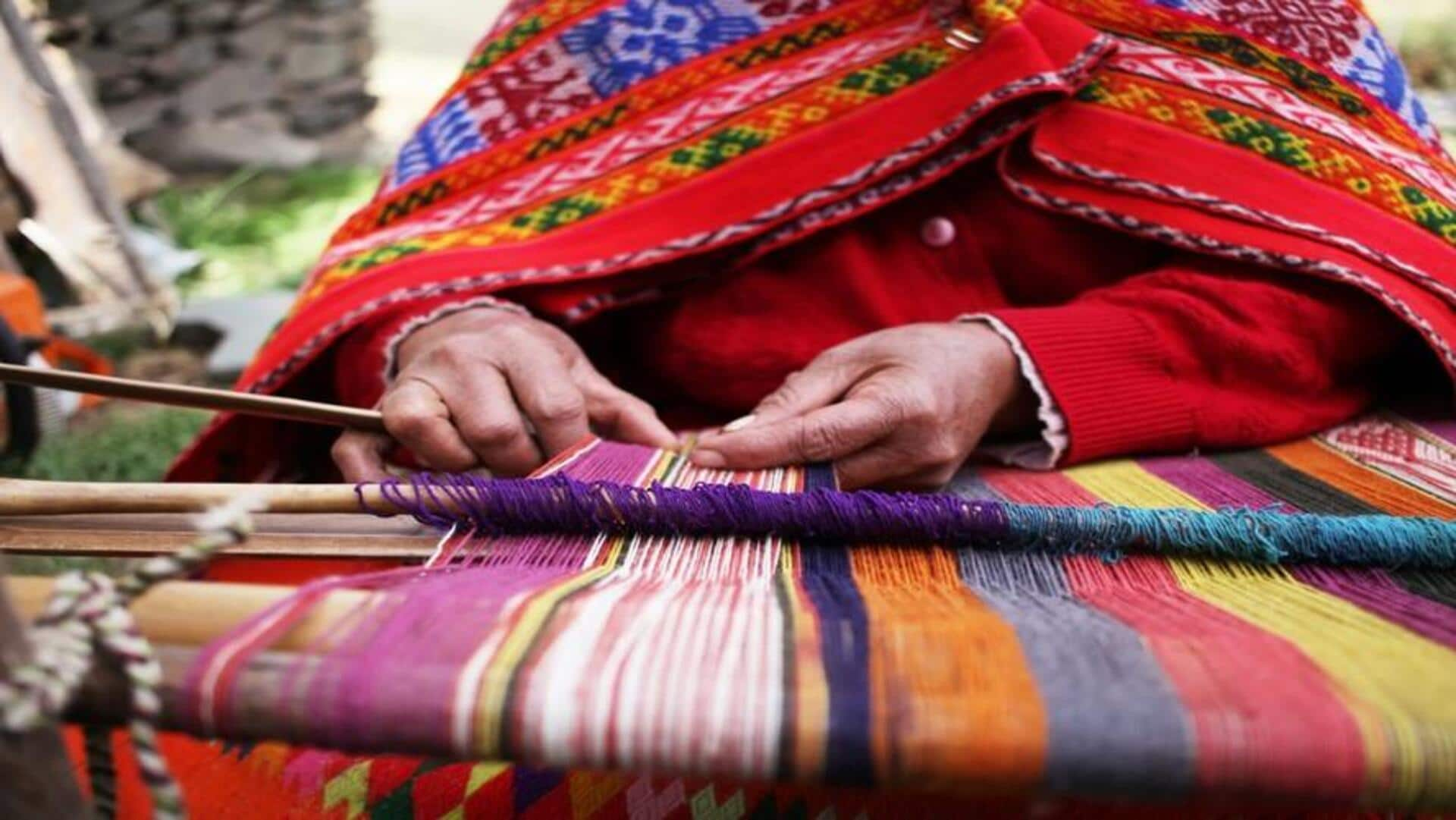
5 fascinating facts about Peruvian textile designs
What's the story
Peruvian textile designs are a vibrant reflection of the country's rich cultural heritage. Traditionally, these textiles, known for their intricate patterns and vivid colors, have been crafted by skilled artisans for centuries. They not only serve as functional items but as storytelling mediums that convey historical narratives and cultural values. Here are five fascinating facts about these unique textile designs that highlight their significance and artistry.
#1
Ancient techniques still in use
Peruvian textiles are also famous for utilizing ancient techniques, some of which are thousands of years old. Many artisans still use traditional methods like backstrap weaving, which has been passed down generations. The technique allows weavers to create complex patterns with utmost precision and skill, preserving the authenticity of the craft.
#2
Symbolic patterns convey stories
The patterns in Peruvian textiles are also often deeply symbolic. Every design element can denote something in life, be it nature, mythology, or community events. These symbols act as a visual language through which stories and traditions are passed on from one generation to the next.
#3
Natural dyes create vibrant colors
In making Peruvian textiles, artisans traditionally employ natural dyes sourced from various plants, minerals, and even insects. This technique not only advocates for sustainability but also yields a range of vivid colors that immensely amplify the beauty and distinctiveness of every textile piece. The practice stands as a testament to the artisan's commitment toward ecological responsibility and their mastery of color.
#4
Regional variations reflect diversity
Different regions of Peru feature unique textile styles that highlight local customs and surroundings. For instance, communities from the highlands may prefer certain motifs or color schemes that are specific to their area. This diversity highlights the adaptability and creativity that comes naturally with Peruvian textile art.
#5
Economic impact on communities
The production of textiles also supports local economies across Peru. Many communities depend on this craft to generate income by selling at markets or exporting abroad. The demand for authentic handmade textiles not only ensures the continuation of traditional practices but also offers economic opportunities to artisans.